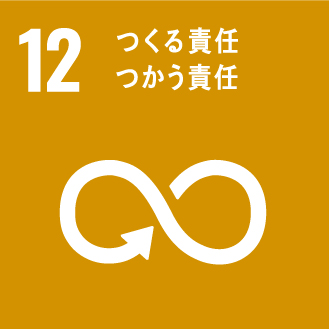
PROJECT
SUASI
Branding for a new paper insole. Environmentally conscious design that transforms its packaging into the product itself, reducing weight by over 90%.
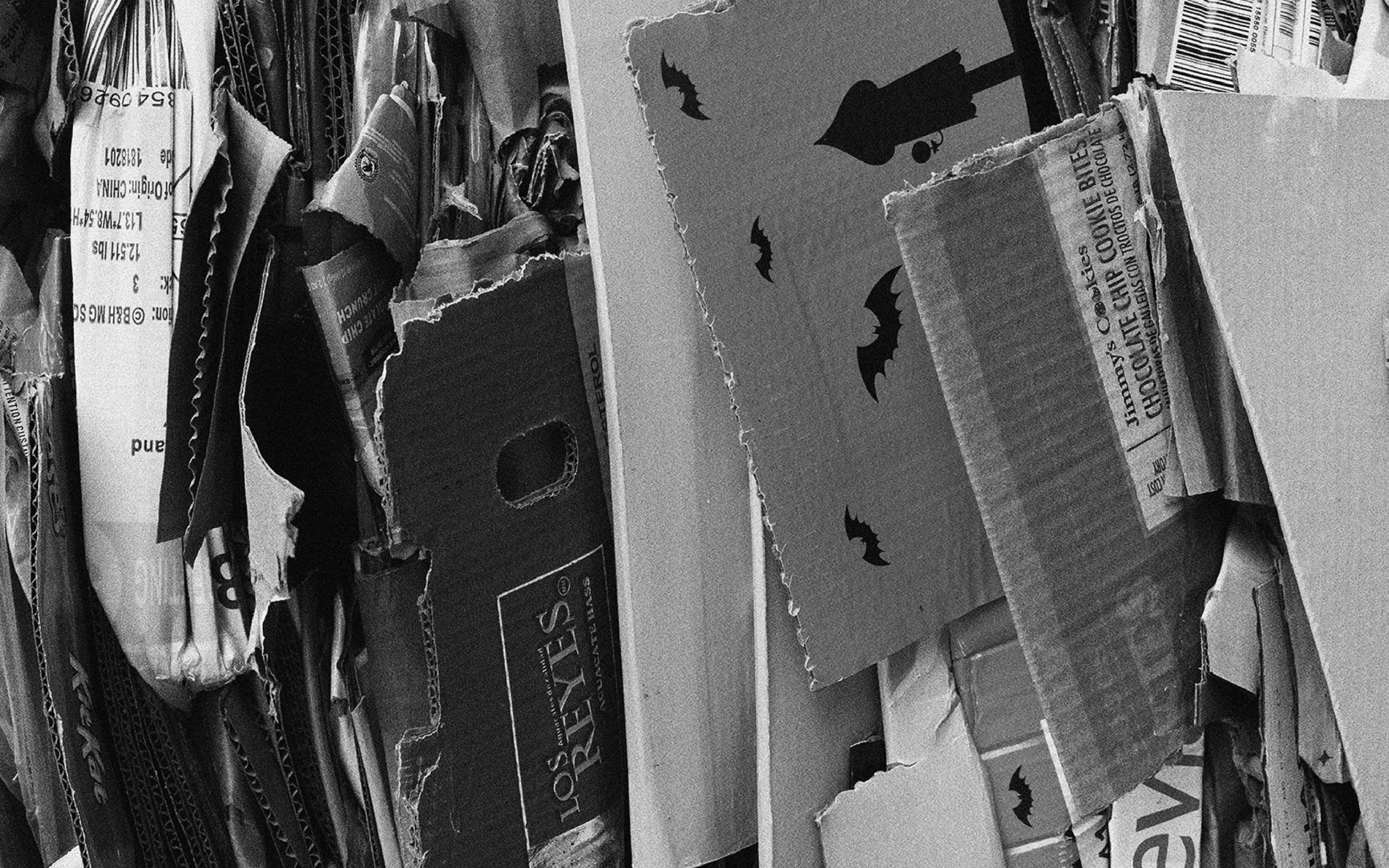
WHY
How to reduce
packaging waste?
Packages and wrapping materials for consumer goods, such as foods and daily necessities, might cost as much as the products themselves, but most of them are turned into garbage immediately after purchase, which has a lot of environmental impacts. For example, ocean plastics have been a global issue while packages have important functions such as protection, branding, differentiating a product in-store, and etc. Reducing the waste of packaging and its associated environmental impact has been a major challenge for companies and manufacturers. So, how can we design a package to solve the environmental impact while maintaining the original functions?
Paper container and packaging emissions from households
How much less waste can we reduce by being creative?

HOW
A packaging design that
can be used without waste.
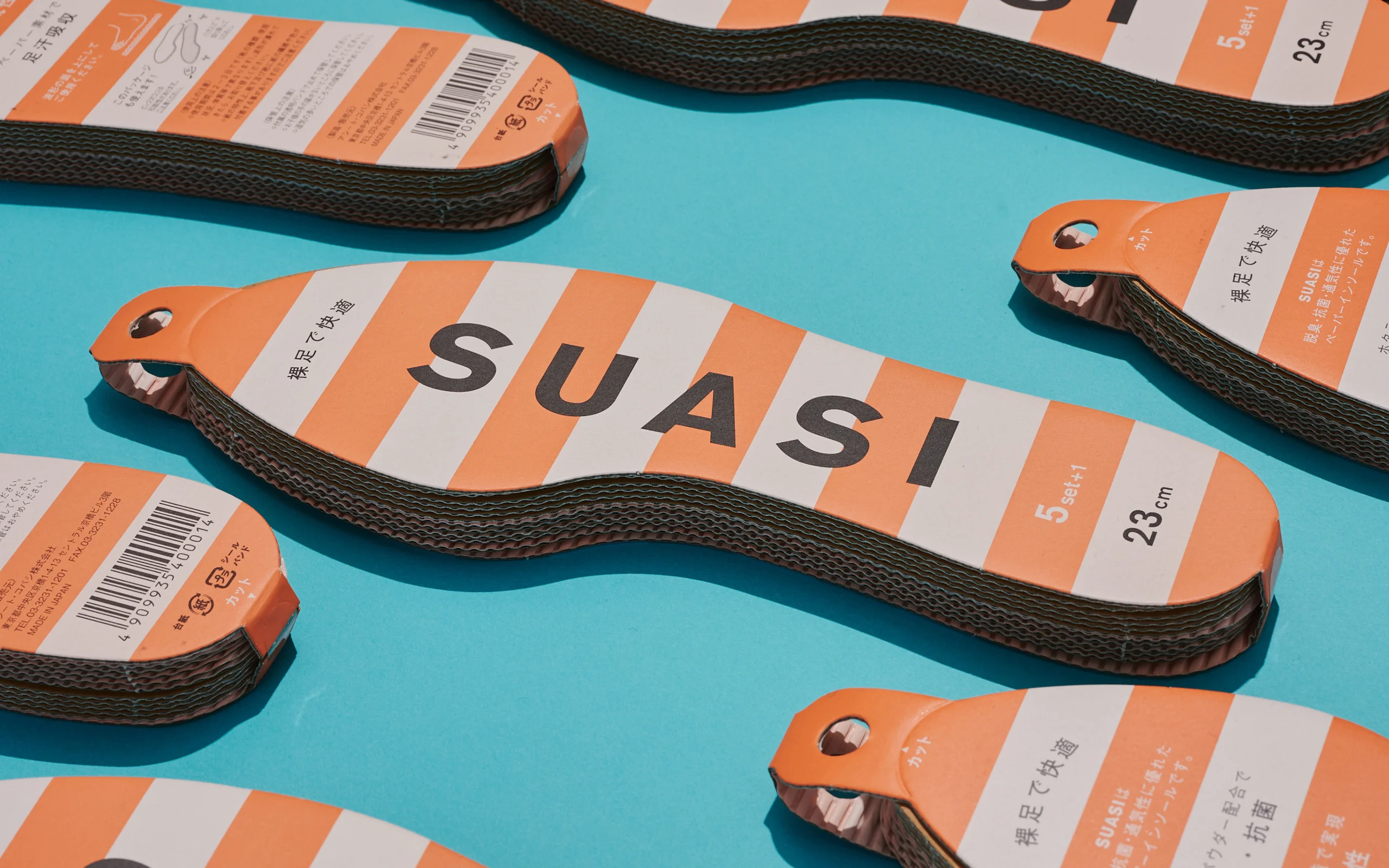
We have branded a new women’s product for Asheet Kobayashi, known for its replacement paper insoles, called SUASI. We added the experience value of “a stylish care product that doesn’t cause stuffiness and odor even when worn barefoot” to the characteristics of the replacement shoe insole. To embody the value, we proposed a brand name, SUASI, which means barefoot and is also the name of a resort island on Lake Titicaca in Peru, South America.
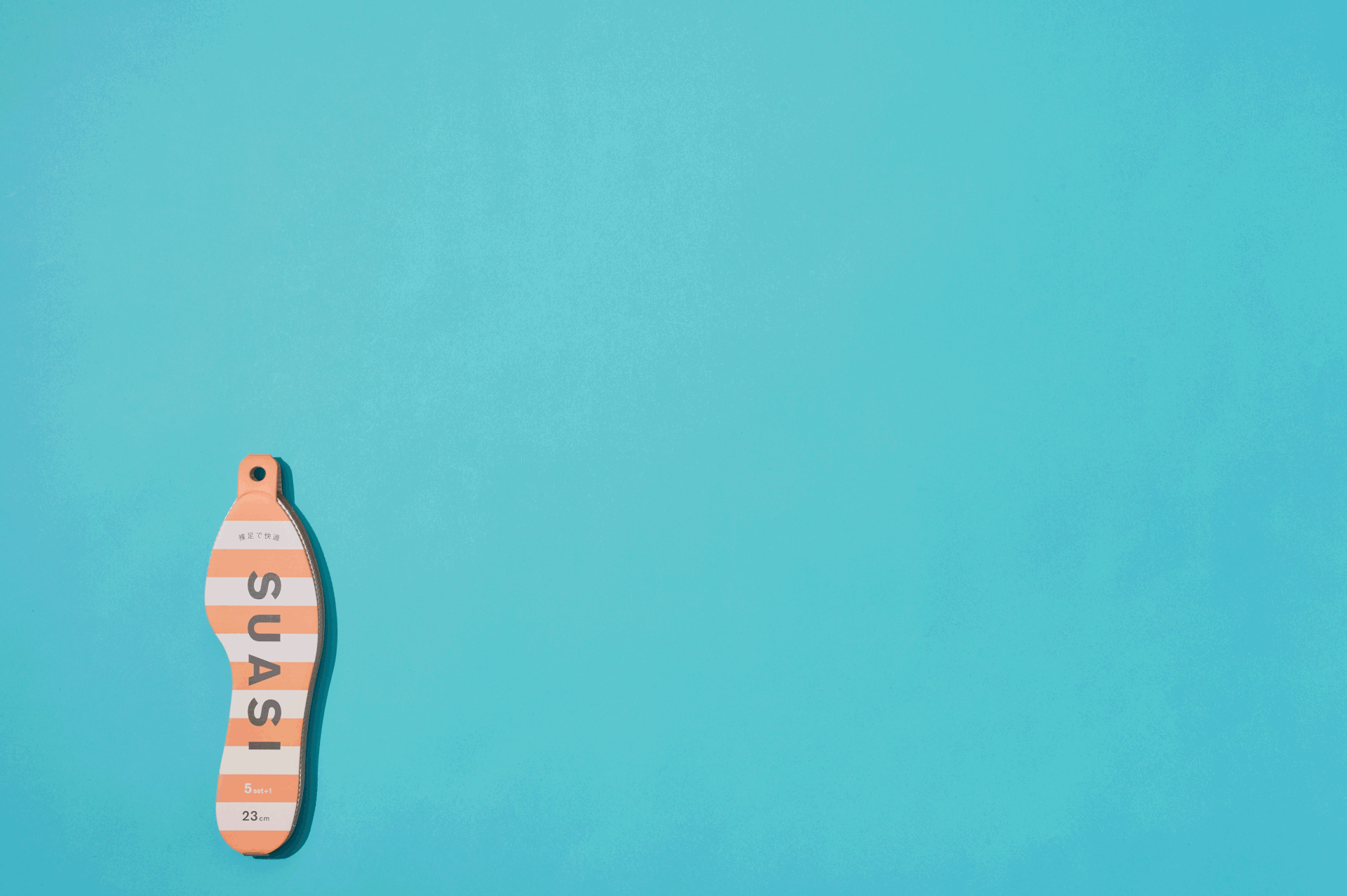
The package is made of the same material as the product and its edges can be cut off with scissors so that the “naked package” can be used as insoles. Thus, a set of five pairs of products can be practically used for six pairs. This design resulted in a 92% reduction in package weight per pair and a significant reduction in package waste compared to the previous product.
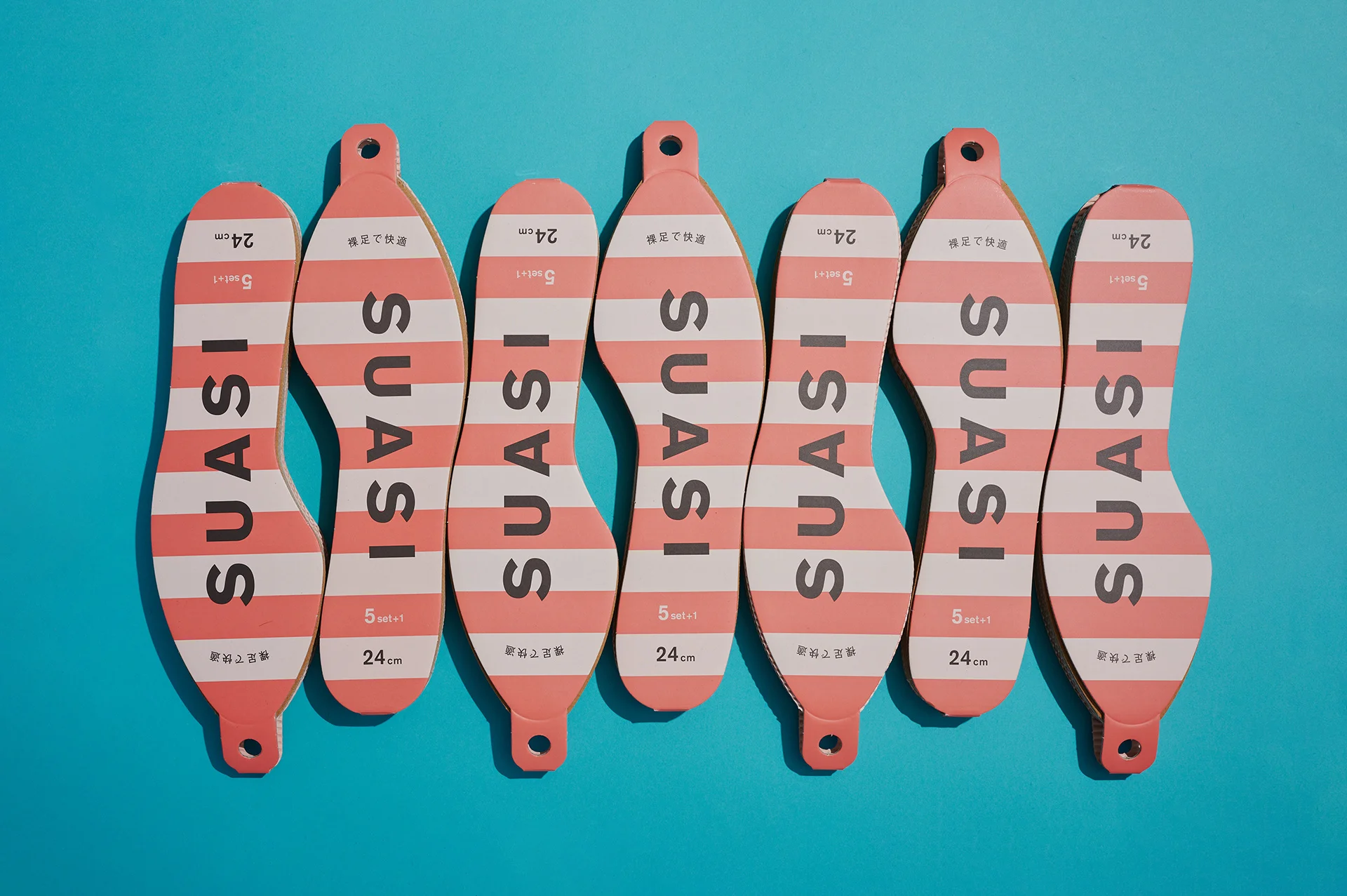
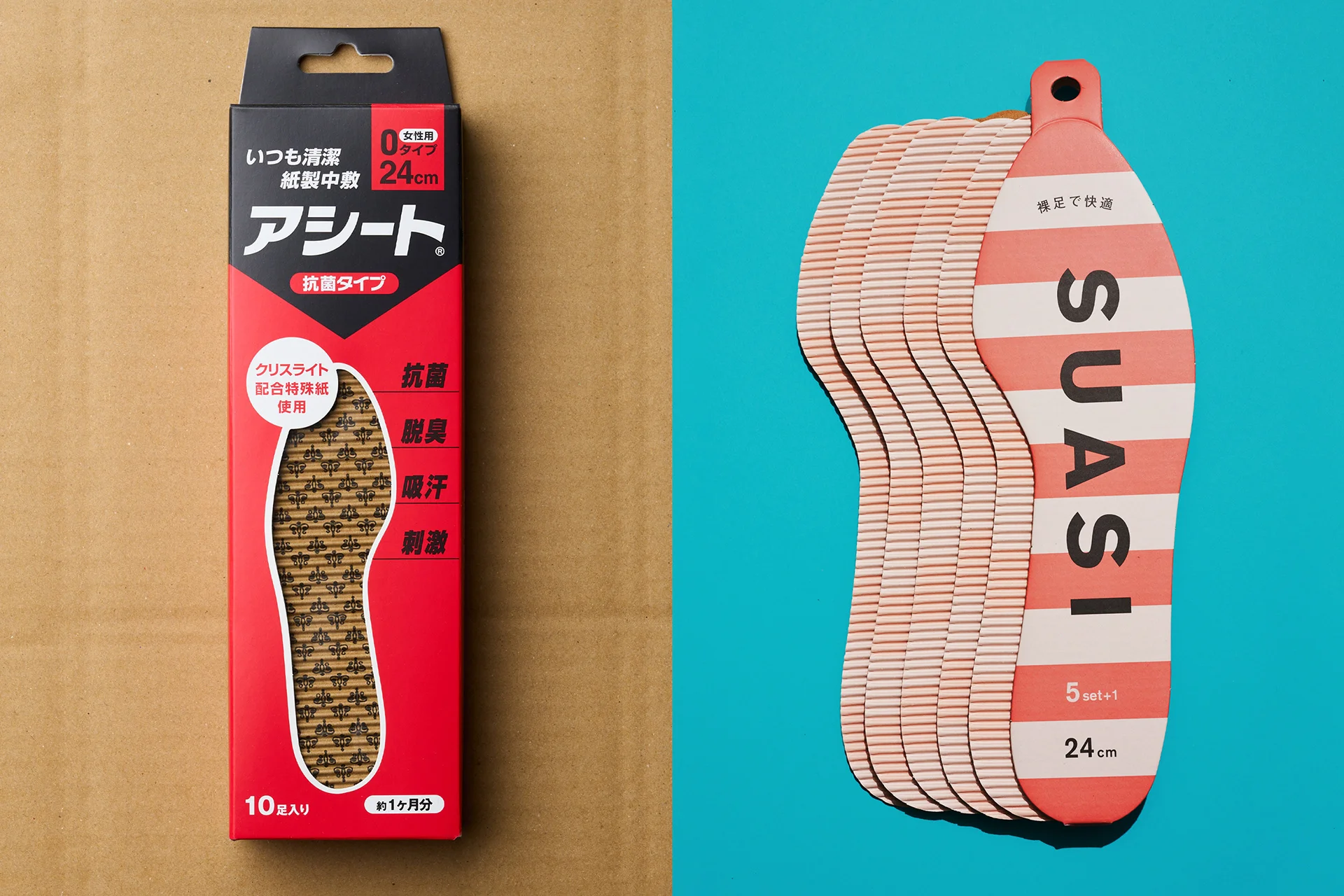
WILL
Becoming a best-selling
product that reduces
environmental impact.
Launched in 2016, SUASI remains a best-selling product for many women today. Packaging, which was once considered a “necessary evil” from the standpoint of branding and product protection while imposing a burden on the environment, has been transformed into the product itself. This designer-led project dramatically reduces waste and environmental impacts, and it became a successful case study in sustainable package design.
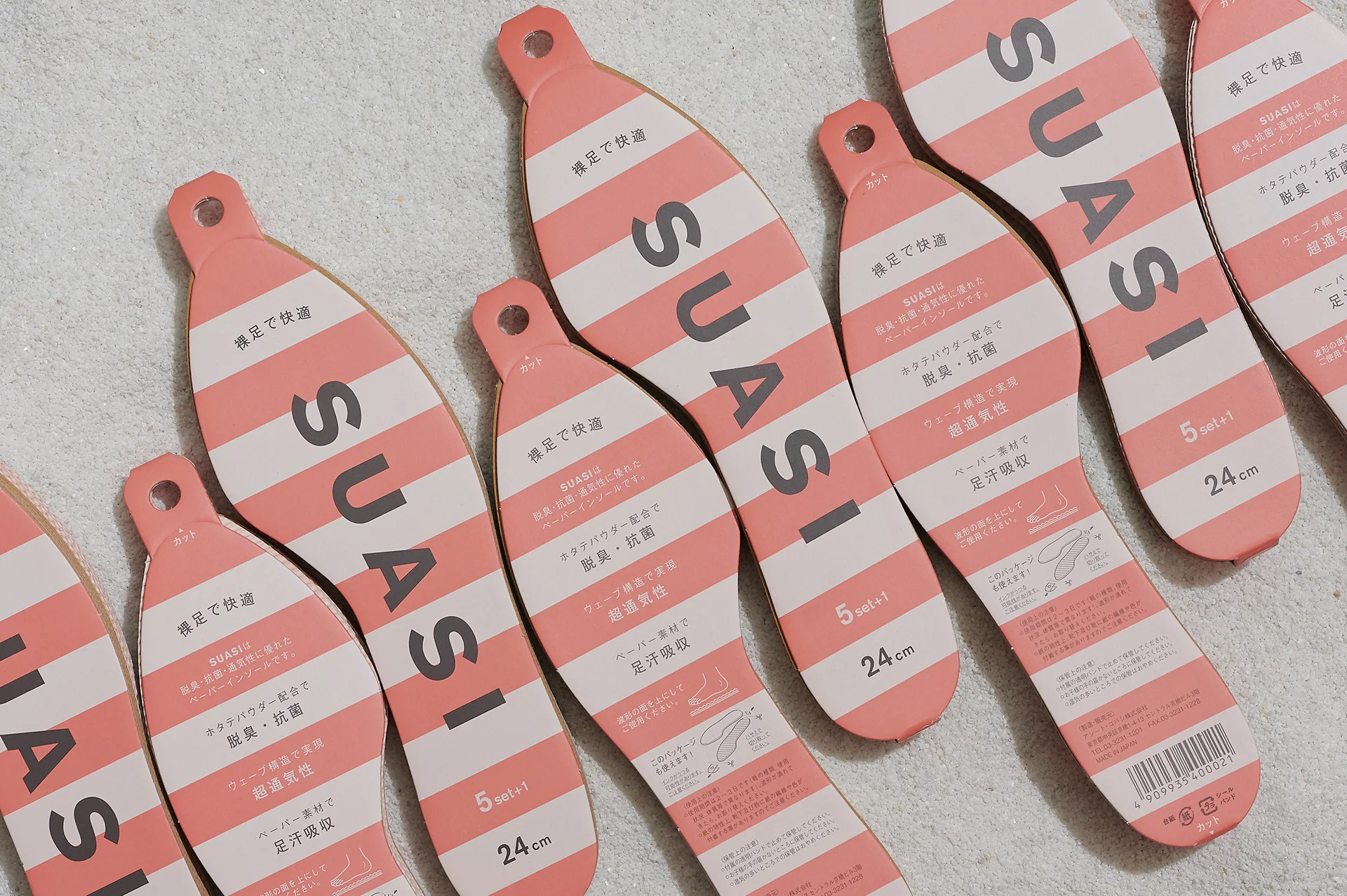
INFORMATION
- What
- SUASI
- When
- 2016
- Where
- Japan
- Client
- Scope
- Packaging / Photograph (社内リリース素材使用のみ)
- SDGs
CREDIT
- Art Direction
- NOSIGNER (Eisuke Tachikawa)
- Graphic Design
- NOSIGNER (Eisuke Tachikawa, Takeshi Kawano)
- Photograph
- NOSIGNER (Yuichi Hisatsugu)
